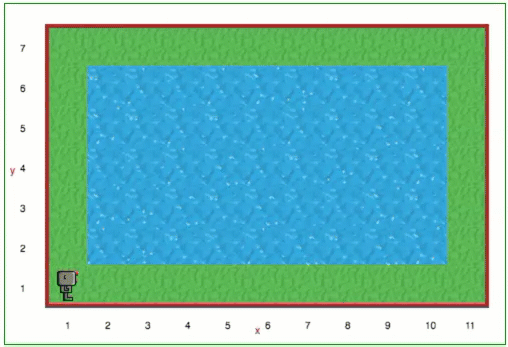Step 14: The not Keyword¶
CS20-CP1 Apply various problem-solving strategies to solve programming problems throughout Computer Science 20.
CS20-CP2 Use common coding techniques to enhance code elegance and troubleshoot errors throughout Computer Science 20.
CS20-FP2 Investigate how control structures affect program flow.
Tutorial¶
Sometimes we want to ask if something is not True. For example, you might want to turn right, but only if there isn’t a wall to your right. You could do this with the following code:
def turn_right():
repeat 3:
turn_left()
if not wall_on_right():
turn_right()
Note the use of the word not before the question wall_on_right(). This makes your question into the opposite of what it would be without the not.
You can use the not keyword with while loops as well. For example, say you wanted to make Reeborg face north no matter what orientation Reeborg is in. To do that, you could write the following:
while not is_facing_north():
turn_left()
Your Turn¶
Open Step 14 on the Reeborg environment.

Reeborg loves going for walks, especially when it is around a lake. The lakes in Reeborg’s neighborhood are all different sizes of rectangles, so Reeborg does not know how many steps it will take to get back to the start of walk. Thankfully, Reeborg happens to be carrying a banana, which you can tell Reeborg to put() down at the start of it’s walk. Reeborg knows it’s done walking when it reaches the banana again.
Use a while statement (looking for the banana object) and an if/else to have Reeborg complete his walking adventure. You must use the not keyword in your solution!
Note
Reeborg cannot use a repeat statement, since it has no idea of the dimensions of the lake it is walking around.